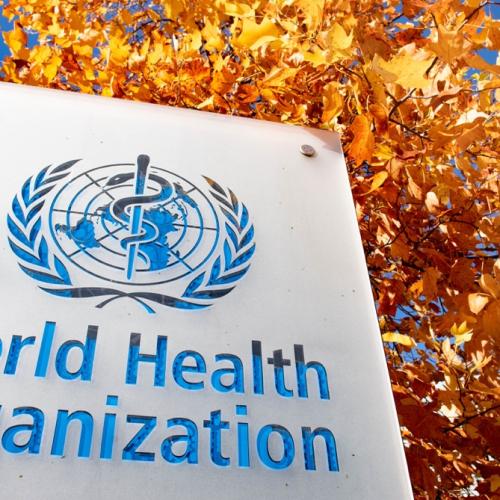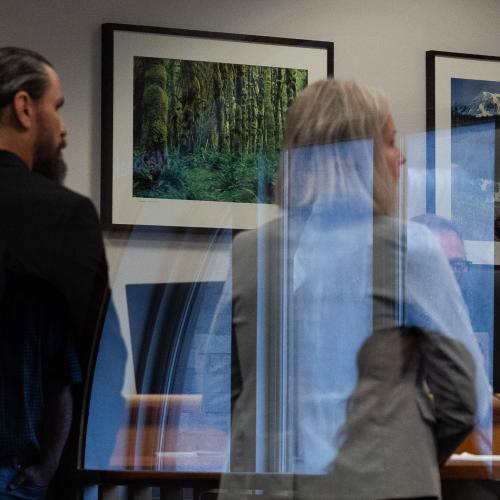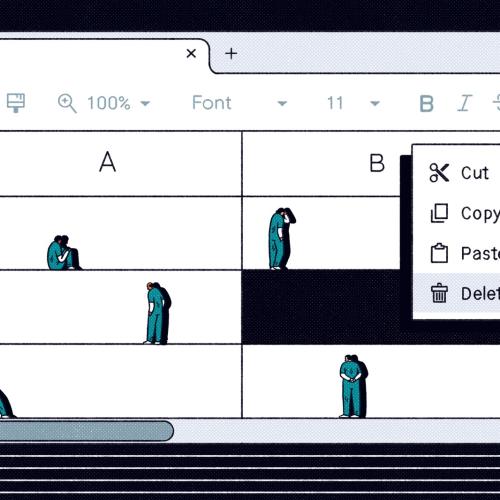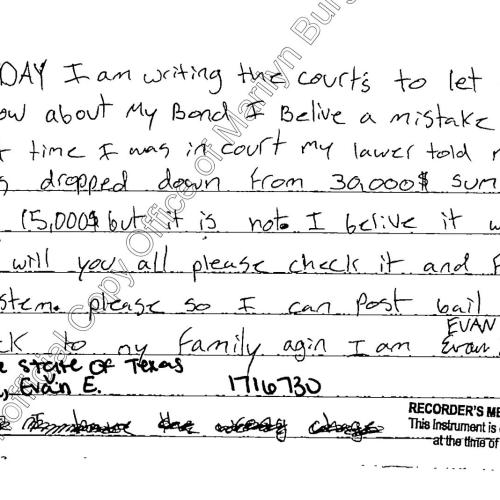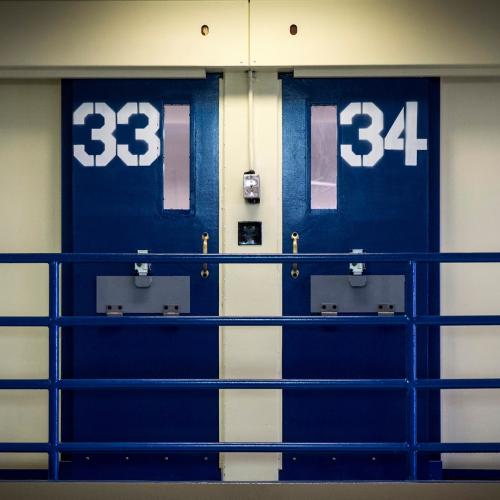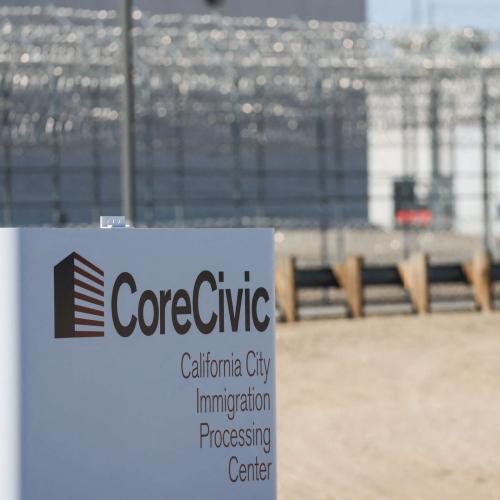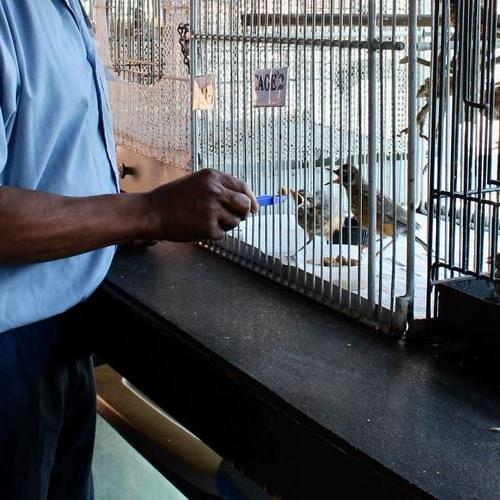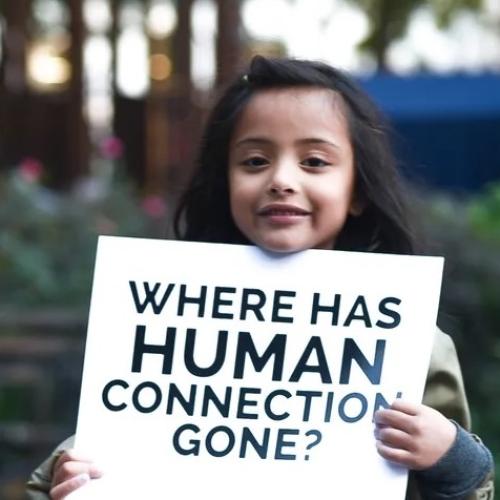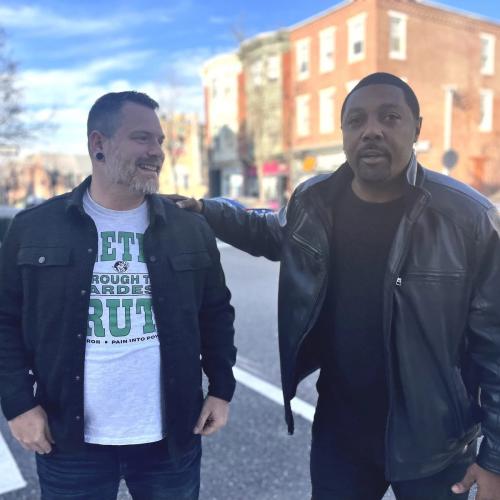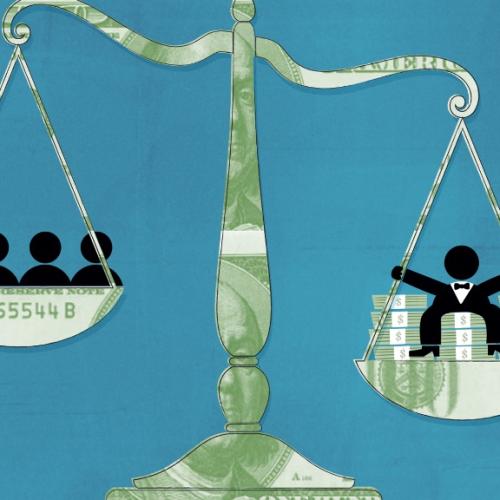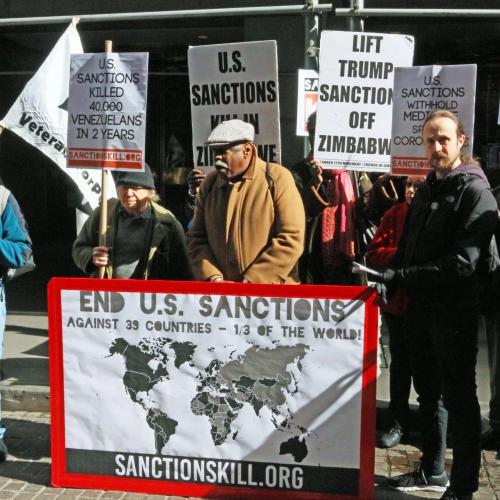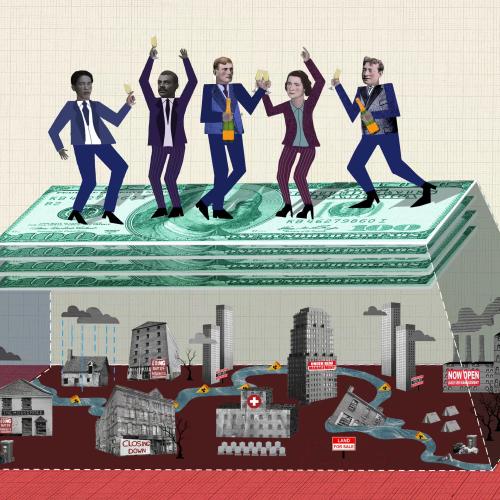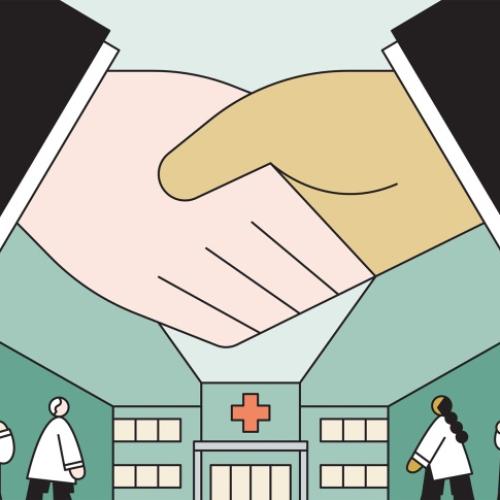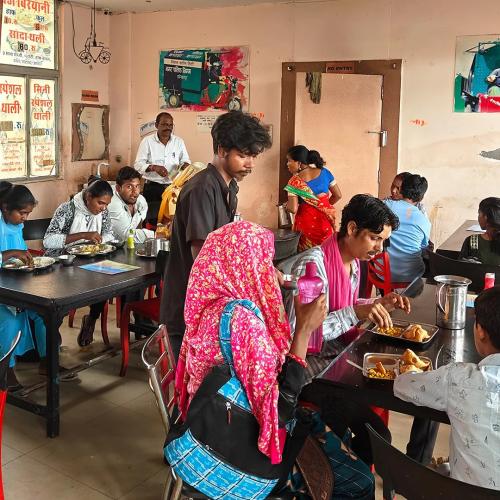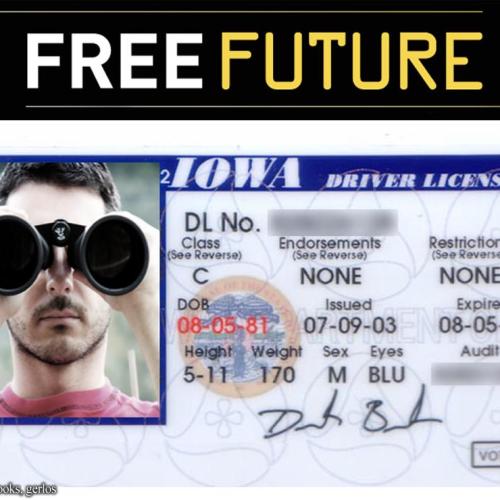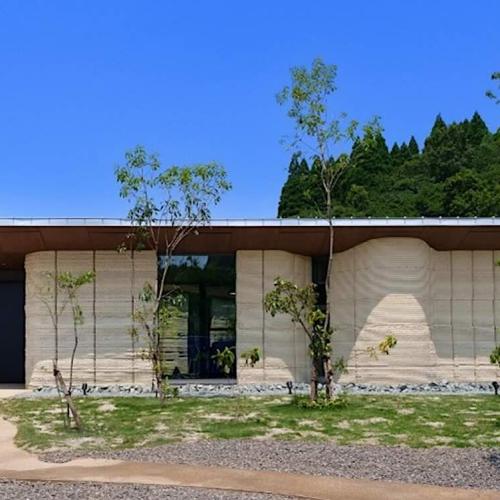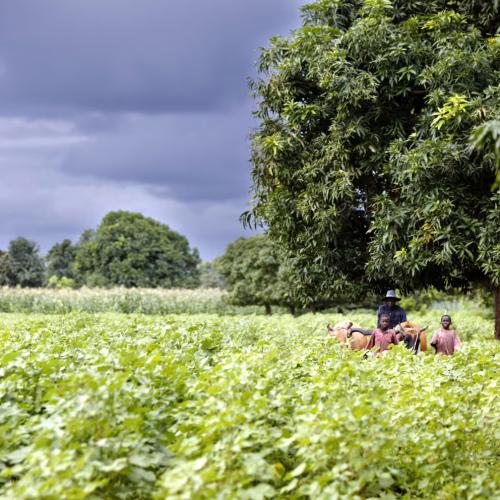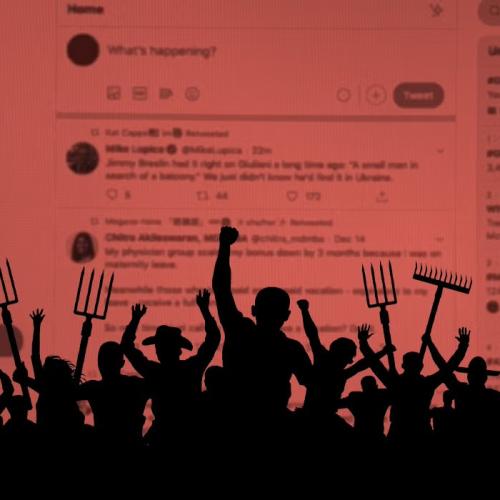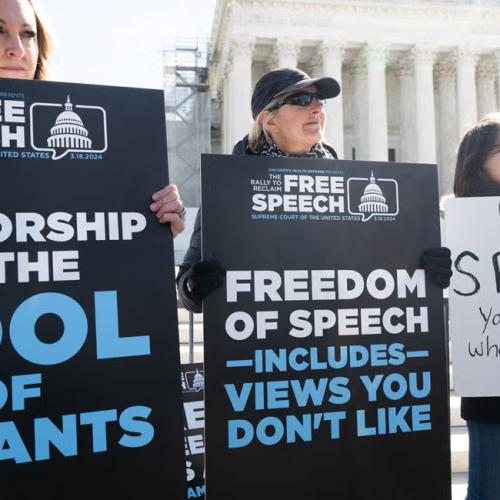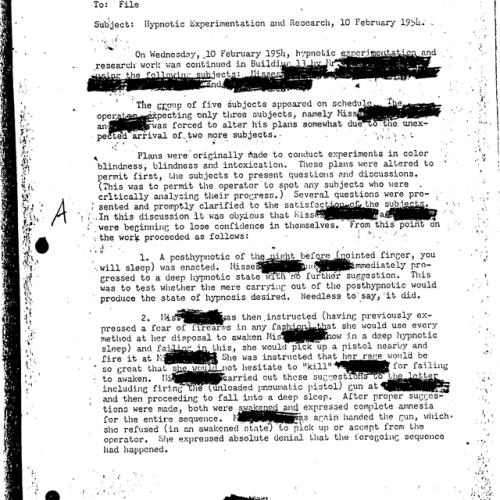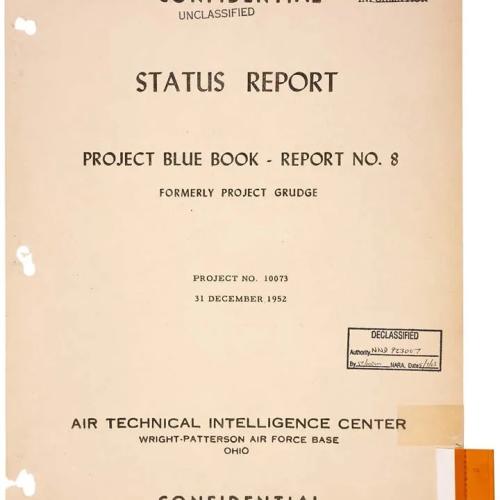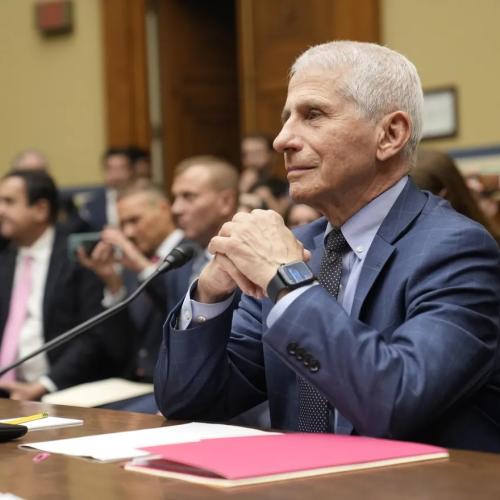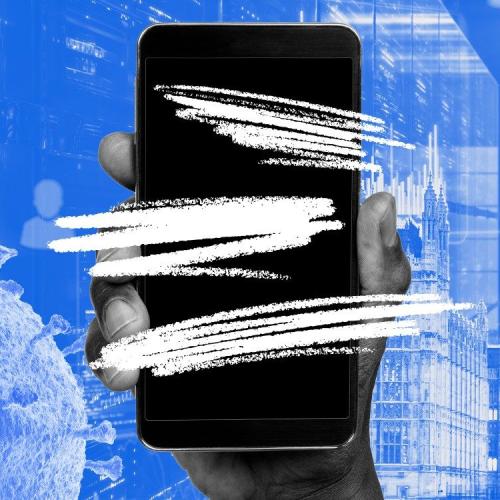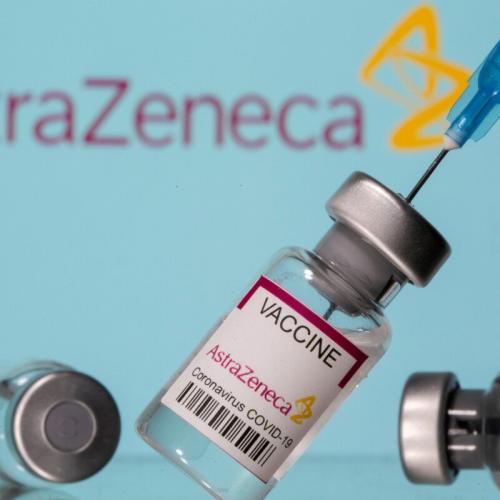Inspiring: Reimagining the Economy Media Articles
Below are key excerpts of inspiring news articles on reimagining the economy from reliable news media sources. If any link fails to function, a paywall blocks full access, or the article is no longer available, try these digital tools.
For further exploration, delve into our Inspiration Center.
You can’t help but applaud Nick Romeo for showing the workable alternatives to capitalism and the moral driver behind them – everything from the way companies are incorporated to how employees are hired, paid and enabled to share in the value they create. There is no need for ordinary workers to be pawns in a system that makes humanity and ethics secondary to the unbending logic of the marketplace and blind, selfish capital. He takes us to the Marienthal job guarantee programme in Austria. Today the town is piloting the impact of a universal jobs guarantee for all of its out-of-work citizens. Essentially there is a job for anyone unemployed for more than 12 months – you can even have a hand in designing what it is you will do with your time when you work – and you get paid up to £2,000 a month. People opt to work rather than receive welfare benefit, and there is ample evidence it raises their self-worth while delivering a service – care to the elderly or tidier parks – that was not there before. Better still, it costs the state virtually nothing because unemployment benefit is simply transferred to the now employed worker’s pay packet. Romeo takes his reader from one inspiring example to another – from the Purpose economy programme in the US, in which firms are dedicated to delivering greater purpose in perpetuity, to examples of companies paying genuine living wages to their employees to encourage commitment. Around 7,000 B Corps, which commit in their founding constitution to put social goals before profit, now trade in more than 90 countries – there were effectively none 25 years ago.
Note: Explore more positive stories like this in our comprehensive inspiring news articles archive focused on solutions and bridging divides.
Direct cash programs are growing across America, offering a path out of poverty through economic mobility. During a two-week period in 2022, nearly a quarter of a million people in the Chicago area applied for the Cook County Promise Guaranteed Income Pilot, the nation's largest direct cash pilot, and ultimately 3,250 families were randomly selected to get $500 a month for two years. Similar direct cash initiatives have changed the physical, emotional, and economic lives of families that participate. Children are better cared for, and they excel in school. Adults experience improved health and stronger familial relationships. And crucially, when recipients have economic stability, they can plan and invest in their futures—many, for the first time in their lives. The Stockton SEED project, which gave $500 a month for two years to 130 people, saw results that mirrored prior direct cash research. The study ... found that the expansion of finances and the predictable, stable source of income brought by the program created "self-determination and capacity for risk-taking not present prior," meaning that when participants could predictably afford child care, transportation, and training programs they had the financial freedom to invest in their own futures. People have big ambitions, no matter the size of their bank account. For most Americans facing economic struggles, their chief problem is a lack of cash, and not a lack of character.
Note: Explore more positive stories like this in our comprehensive inspiring news articles archive focused on solutions and bridging divides.
Cryptocurrencies represent the marriage of decentralized networks (what we commonly know as the internet today) and assets like money. [Cryptocurrency] uniquely enables new solutions to otherwise intractable technological and social problems. Users often lose control over their personal information online, either all at once through platform hacks or bit-by-bit in the opaque world of online advertising and data brokers. A major issue is that the business model of big tech firms is advertising, creating an incentive to aggregate data into a single database, creating a “honeypot” for hackers. Blockchains can enable a new form of digital identity document for the web. Using these credentials, users can authenticate for services without having to divulge as much personal information. Traditional payment systems are often slow, costly and inaccessible to many. Cryptocurrencies backed by real-world currencies, dubbed “stablecoins,” provide an efficient alternative for global transactions. In 2023, stablecoins accounted for $4.5 trillion of crypto transaction volume on blockchain networks. Even digital payments giant PayPal announced the launch of its stablecoin earlier this year. Traditional humanitarian aid often suffers from inefficiency, lack of transparency and corruption, undermining its effectiveness and trustworthiness. Blockchain offers a solution by providing a transparent, traceable and secure system for humanitarian aid. A recent UN pilot [provided] aid directly to families affected by the war between Russia and Ukraine. The entertainment industry is famously concentrated, causing writers and actors to recently go on strike ... demanding better pay and new contract clauses. Blockchain technology enables more democratic digital economies through non-fungible token (NFTs) marketplaces like Zora, and decentralized autonomous organizations (DAOs) like CreatorDAO, allowing creators and artists to take advantage of online marketplaces and earn fair compensation for their contributions.
Note: Watch our latest video on the potential for blockchain to fix government waste and restore financial freedom. Explore more positive stories like this on technology for good.
Britni Ricard is the CEO of her own cosmetics company, COTA Skin Care, which she started in 2019. Last year, she also became a landlord when she bought her first investment property. The apartment building in New Orleans has 10 units and, according to Ricard, many of the tenants are single women with children. That made her think of her own childhood growing up in public housing, and how difficult Christmastime could be for her mom. "It was tough," Ricard told CBS News. "My mom was a single woman raising three children alone, and watching her continuously struggle as a child and wanting to figure out, 'How can I help?'" In November, Ricard gathered her tenants for a pre-holiday meeting and, while decked out in a chartreuse suit, she delivered a gift to her tenants that would make Santa Claus green with envy: one month of free rent. A video of her surprise announcement went viral on TikTok. In the video, Ricard also offered to organize a seminar to help her tenants become homeowners. Kedesha Dunn lives in one of the building's units with her two boys. The single mom said Ricard's gift would allow her family to celebrate more and worry less. "Now I, you know, I don't have to go try to take a loan out or something like ask my family for money," Dunn said. "Like, I can do it now. Like, I can do it." "I'm an emotional person," Dunn added. "I start to cry. 'Cause I'm just like, that is so sweet. She's uh, better than Santa Claus at this point. ... Like a guardian angel."
Note: Explore more positive stories like this in our comprehensive inspiring news articles archive focused on solutions and bridging divides.
Since 2017 the U.S.-based charity GiveDirectly has been providing thousands of villagers in Kenya what's called a "universal basic income" – a cash grant of about $50, delivered every month, with the commitment to keep the payments coming for 12 years. This week a team of independent researchers who have been studying the impact released their first results. Their findings ... compare the outcomes for about 5,000 people who got the monthly payments to nearly 12,000 others in a control group who got no money. The researchers also compared the recipients to people in two other categories: nearly 9,000 who received the monthly income for just two years; and another roughly 9,000 people who got that same two years' worth of income but in a lump-sum payment. When it came to measures of well-being such as consumption of protein or spending money on schooling, all of the groups who were given cash were better off than people in the control group that got no money. Those who got the money in a lump sum vastly outperformed people who were promised the same amount for just two years but received it in monthly installments. Lump-sum recipients had 19% more enterprises – businesses such as small shops in local markets, motorbike taxis and small-scale construction concerns. And the lump sum recipients' net revenues from their businesses were a whopping 80% higher. The grants did not seem to fuel inflation.
Note: Explore more positive stories like this in our comprehensive inspiring news articles archive focused on solutions and bridging divides.
Ray, a man in his 50s, used to live in an emergency homeless shelter in Vancouver, Canada. Then he participated in a study that changed his life. The newly published, peer reviewed PNAS study, conducted by the charity Foundations for Social Change in partnership with the University of British Columbia, was fairly simple. It identified 50 people in the Vancouver area who had become homeless in the past two years. In spring 2018, it gave them each one lump sum of $7,500 (in Canadian dollars). And it told them to do whatever they wanted with the cash. Over the next year, the study followed up with the recipients periodically, asking how they were spending the money and what was happening in their lives. The recipients of the cash transfers did not increase spending on drugs, tobacco, and alcohol, but did increase spending on food, clothes, and rent. What’s more, they moved into stable housing faster and saved enough money to maintain financial security over the year of follow-up. “Counter to really harmful stereotypes, we saw that people made wise financial choices,” Claire Williams, the CEO of Foundations for Social Change, [said]. What’s more ... giving out the cash transfers in the Vancouver area actually saved the broader society money. Enabling 50 people to move into housing faster saved the shelter system $8,277 per person over the year, for a total savings of $413,850. That’s more than the value of the cash transfers, which means the transfers pay for themselves.
Note: Explore more positive stories like this in our comprehensive inspiring news articles archive focused on solutions and bridging divides.
The free, moneyless economy is flourishing in America. Roughly 250 million people were still visiting Craigslist worldwide each month in 2022, 27 years after the site was launched in 1995—and many of those Craigslist users are posting and sharing goods under the site’s popular “free stuff” section. About eight years after Craigslist was launched, Freecycle Network came online in 2003. More than 9 million Americans were still using Freecycle as of 2020, which I detailed in an article that year. And then there’s the relatively young Buy Nothing Project, which turned 10 years old in July of 2023. In addition to providing a digital space where people can request things they need, post things they’re giving away, and share gratitude, one of the B corp’s social benefit model goals is to encourage people to organize community and local events around buying nothing. Over the years, Buy Nothing has been gaining popularity—not through any marketing on the part of the organization but through word-of-mouth and organic growth. The Buy Nothing app, which has only been around for about two years, is ... zeroing in on 1 million users. Buy Nothing’s model varies from that of Craigslist’s “free stuff” and Freecycle in that it is focused on community groups, gatherings, and events organized by and for local communities. The idea is that a global reuse economy will emerge community by community. Buy Nothing exists ... “to build resilient communities where our true wealth is the connections forged between neighbors.”
Note: Explore more positive stories like this in our comprehensive inspiring news articles archive focused on solutions and bridging divides.
In a recent discussion on the implications of blockchain technology and its democratization of finance, Roundtable anchor, Rob Nelson and Jordan Fried, CEO of Immutable Holdings explored the depth and magnitude of the possible changes ahead. Jordan Fried ... discussed the roots of Bitcoin, stating it was a direct protest against institutions like BlackRock and the financial systems that seemed to work only for the wealthy. Recalling the 2008 financial crisis, Fried expressed the sentiments of many who wondered why banks were bailed out while average individuals suffered. Bitcoin arose from this frustration, offering a transparent financial system unlike anything before. Expanding on this, Fried emphasized the transparency of Bitcoin in comparison to traditional currencies. In Bitcoin's blockchain, every transaction is traceable, unlike the ambiguous dealings within the current banking system. Contrary to common misconceptions ... only a fraction of crime occurs in crypto, as compared to the US dollar. Most financial crimes, including money laundering, are committed in US dollars. Rob Nelson humorously highlighted the recurring financial scandals of banks like Wells Fargo, suggesting that these financial giants often factor in their fines as just another "cost of doing business." In this evolving era of blockchain and cryptocurrency, one thing is clear: the potential impact on the financial world is vast. The very essence of how we view and interact with money is on the cusp of profound change.
Note: Explore more positive stories like this in our comprehensive inspiring news articles archive focused on solutions and bridging divides.
Michael Tubbs had just been elected the youngest and first Black mayor of Stockton, California, when he announced his intention to launch what would be the country’s first universal basic income program in decades. The year was 2017, and the plan was to pay some residents $500 a month, no strings attached. In the years since his announcement ... the 125 participants of the Stockton program showed that they used that extra $500 a month not for luxuries or frivolities, but to pay off debt, obtain full-time jobs and get medical treatment like dental work that they had put off for years because they could not afford it. Now, more than 100 cities and jurisdictions around the country have launched their own guaranteed income programs. The basis of guaranteed income is simple: poverty, a problem at the crux of so many societal woes, can be solved with money and it is the government’s job to solve it. It’s a guaranteed monthly income without the requirements that come with a welfare program – requirements that often keep recipients in poverty when the program benefits outweigh any job or income advancement they could make. “We’re talking about like life-changing impacts for a very small amount of dollars, in the grand scheme of things,” Tubbs said. The Stockton program was originally funded by a grant from the Economic Security Project, but some programs today are drawing directly from their governmental budgets.
Note: A documentary about the Stockton program titled "It's Basic" was recently featured at the Tribeca Film Festival. Explore more positive stories like this in our comprehensive inspiring news articles archive focused on solutions and bridging divides.
Finland's high levels of social trust could be one reason the country has been ranked as the world's happiest for six years in a row. As the World Happiness Report, which does the ranking, notes, most Finns expect their wallet to be returned to them if they lose it. Finns have liberated children, trust their neighbors, commune with nature, and leave work on time. But ask them what they think of the happiness report, and you'll get a surprising answer. "We're always surprised that we are still the first," Meri Larivaara, a mental-health advocate, told me in [a] Helsinki coffee shop. "Every year there is a debate like, 'How is this possible?'" In fact, locals I talked to were exasperated by the survey and even annoyed by the global perception of them as happy. Finnish people are often stereotyped as introverted and keeping to themselves. But it's also true that Finns are very content with what they have. "They call us up and just ask if we like our lives. We just say there's nothing wrong right now, maybe call back tomorrow," one local said of the survey. Maybe it's not so much that Finns are happy but that they don't have some of the intense fears you might find in other places. Finland's government sponsors one of the most robust welfare systems in the world. In 2021, the Nordic country spent 24% of its gross domestic product on social protection — the highest of any other OECD country that year. Healthcare and education are free for all residents — all the way through to the Ph.D. level.
Note: Explore more positive stories like this in our comprehensive inspiring news articles archive focused on solutions and bridging divides.
Public banks are typically operated by government or tribal authorities and, in theory, would be chartered to achieve social good and invest in communities. Only two public banks currently operate in the United States: the Bank of North Dakota, founded in 1919, and the Territorial Bank of American Samoa, founded in 2018. Organizations pushing for a public banking option exist in 37 states, according to the Public Banking Institute. In contrast to private banks, which are responsible to their shareholders, public banks are responsible to their boards and are chartered to invest in public needs. The Bank of North Dakota, for instance, is chartered to offer a “revolving loan fund” to farmers, and profits from loans are directed back into the fund to keep interest rates low. The modern movement to invest in public banks grew out of the 2008 financial crisis and was galvanized during the pandemic, fueled by a populist distrust of the banking and finance sectors. In October 2020, Representatives Alexandria Ocasio-Cortez and Rashida Tlaib introduced the federal Public Banking Act, which would allow state and local governments across the country to create public banks. In the first two months of 2021 there were sixteen bills across the country designed to pave the way for public banks. Supporters of public banks are hoping that any deposits from state and local governments can be used to fund community-based projects that have trouble getting funded by private banks.
Note: Explore more positive stories like this in our comprehensive inspiring news articles archive focused on solutions and bridging divides.
Community wealth building initiatives are taking hold in cities across the world, strengthening worker pay, local economies and democracy. A recent help-wanted ad for a laundry worker in Cleveland contained some unusual language, asking prospective candidates: “Have you ever wanted to work for a company that is 90 percent employee-owned?” The ad went on to identify Evergreen Cooperative Laundry as the only employee-owned commercial laundry firm in the country, citing a commitment to building the wealth and careers of its employees. The cooperative movement in the Rust Belt city of Cleveland has deep roots in community struggle for shared wealth. Its earliest origins are in the Mondragon co-op movement of the Basque Country in northern Spain, where tens of thousands of workers are organized into a vast co-op network that has flourished since the 1950s. Here in the U.S., when steel companies were closing down throughout the Ohio Valley in the 1970s ... a small band of activists promoted the idea of worker ownership. The model is a simple one: First, identify anchor institutions — hospitals, universities, seats of government — that are not going to relocate in search of higher profits and incentivize them to do their procurement of supplies and services locally, so that those dollars stay at home. Then, make regulatory, financing and policy changes that support the growth of cooperatives to supply their needs, so that the business profits stay with the workers.
Note: Explore more positive stories like this in our comprehensive inspiring news articles archive focused on solutions and bridging divides.
Soon after giving birth to a daughter two months premature, Terri Logan received a bill from the hospital. She recoiled from the string of numbers separated by commas. Then a few months ago Logan received some bright yellow envelopes in the mail. They were from a nonprofit group [RIP Medical Debt] telling her it had bought and then forgiven all those past medical bills. The nonprofit has boomed during the pandemic, freeing patients of medical debt, thousands of people at a time. Its novel approach involves buying bundles of delinquent hospital bills – debts incurred by low-income patients like Logan – and then simply erasing the obligation to repay them. It's a model developed by two former debt collectors, Craig Antico and Jerry Ashton, who built their careers chasing down patients who couldn't afford their bills. RIP buys the debts just like any other collection company would – except instead of trying to profit, they send out notices to consumers saying that their debt has been cleared. A surge in recent donations – from college students to philanthropist MacKenzie Scott, who gave $50 million in late 2020 – is fueling RIP's expansion. To date, RIP has purchased $6.7 billion in unpaid debt and relieved 3.6 million people of debt. RIP is one of the only ways patients can get immediate relief from such debt, says Jim Branscome, a major donor. "As a bill collector collecting millions of dollars in medical-associated bills in my career, now all of a sudden I'm reformed: I'm a predatory giver," Ashton said.
Note: To understand the corruption in healthcare that results in expensive medical bills, read this revealing 10-page summary of medical doctor Marcia Angell's book The Truth About Drug Companies. To further explore stories that help create the world we want to live in, check out our inspiring news articles collection and our Inspiration Center.
“Shady Pines, Ma!” If that quip sounds familiar, it’s probably because you spent some happy half hours laughing at the hit Golden Girls sitcom. The character played by Bea Arthur was related to one other roommate — her mother Sophia. The other two characters, Rose and Blanche, were, like Dorothy in their late 40s to mid-50s. Why were these women sharing a single family house? What are the housing alternatives for older and middle-aged singles? For many, it’s co-living, which provides advantages well beyond the financial. “The number one benefit ... is the social aspect of shared housing,” explains Maria Claver [of] California State University. “More than any other lifestyle factor (including smoking, diet and exercise), we know that having social support is the most important predictor of morbidity (or illness) and mortality. Having housemates is not the ideal living arrangement for everyone. For those wanting their own space, but seeking the benefits of community and camaraderie, cohousing is a viable alternative. Cohousing offers all of the benefits of living in community – connection, common meals, frequent activities, knowing your neighbors – but with the added benefit of privacy that isn’t always available in shared homes. When we have access to a social safety net, neighbors who care about us, people who can drive us to doctor’s appointments or bring us meals during a difficult time in life, we are more likely to experience stability and wellbeing.
Note: Explore a treasure trove of concise summaries of incredibly inspiring news articles which will inspire you to make a difference.
It was six years ago when CEO Dan Price raised the salary of everyone at his Seattle-based credit card processing company Gravity Payments to at least $70,000 a year. Price slashed his own salary by $1 million to be able to give his employees a pay raise. He was hailed a hero by some and met with predictions of bankruptcy from his critics. But that has not happened; instead, the company is thriving. He said his company has tripled and he is still paying his employees $70,000 a year. "I make $70,000 a year," Price [said]. According to the Economic Policy Institute, average CEO compensation is 320 times more than the salaries of their typical workers. Price said despite the success his company has had with the policy, he wishes other companies would follow suit. "I would say that's the failure of this. You know, I feel like I've been shouting from the rooftops like, 'This works, this works, everybody should do it!' and zero big companies are following suit because the system values having the highest return with the lowest risk and the lowest amount of work," Price said. Price thinks Gravity's returns are up in large part because bigger paychecks have lead to fiercely loyal employees. "Our turnover rate was cut in half, so when you have employees staying twice as long, their knowledge of how to help our customers skyrocketed over time and that's really what paid for the raise more so than my pay cut," said Price.
Note: Explore more positive stories about reimagining the economy.
Having learned from other cities’ attempts to address homelessness, Albuquerque, New Mexico, has opened a village of tiny homes (THV). It hopes fostering a sense of community will prepare residents for permanent housing. But villagers aren’t supposed to spend too much time in their new homes. The center of the community is the “Village House,” where residents can cook, do laundry, hold meetings, go to the library, and watch television. They also do chores and help run the village. When people experiencing homelessness move off the street, “they lose [their] community,” says Ilse Biel, resource manager for the THV. “It takes forever to forge a new community.” “With this model we’re almost trying to force the issue,” she adds. The THV provides access to an occupational therapist and psychiatric nurse, as well as volunteers who help residents with computer skills, résumé building, and mock interviews. What Henry Esquivel likes most about his new house is the blast of cold air it delivers when he walks in. It’s a big change from the Ford F-150 he used to sleep in. It’s more spacious too, despite his new house being just one room. And it comes with neighbors – all of whom, like him, recently experienced homelessness. A few doors down is Mark Larusch. The father of three has potted plants and an Adirondack chair on his patio. A few doors further away is the woman whose large, black Labrador, Dottie, greets Mr. Esquivel excitedly every day.
Note: Explore a treasure trove of concise summaries of incredibly inspiring news articles which will inspire you to make a difference.
A pilot project in a California town is paying homeless residents to tidy up their living areas, and it's changing the culture of the city. The idea stemmed from a conversation with one of the city's police sergeants, said Sarah Bontrager, the housing and public services manager for Elk Grove, a city of 174,000 people located 15 miles south of Sacramento. "We got together to talk about homelessness, and from my prospective I wanted to build better relationships with people who were experiencing homelessness, and he wanted to address some of the complaints that come to his officers," Bontrager told CNN. The number one complaint surrounding homelessness was the amount of trash. "Our public works staff were previously doing cleanups out at encampment sites ... and just spending a lot of time and money doing it. We also wanted a way to reduce interactions at the early stages of Covid," she said. So they came up with the idea to offer an incentive to those who live in the homeless encampments to clean up their area. "We distribute trash bags, and we go out every two weeks to pick up the trash, and if they have it bagged, they are eligible for up to $20 in gift cards to a grocery store," Bontrager said. The recipients can use the gift cards on anything but cigarettes and alcohol. Bontrager said that they usually use them for food or hygiene items. Many of the homeless residents have expressed how thankful they are to be able to go pick out items themselves instead of relying on shelters.
Note: Explore a treasure trove of concise summaries of incredibly inspiring news articles which will inspire you to make a difference.
Bitcoin usage in emerging markets is increasing rapidly. And while it’s true that Bitcoin can be a better alternative for unbanked peoples who don’t have the means, access, or even the basic proof of identity to open a bank account, it turns out its biggest benefit today for many people is that Bitcoin is censorship-resistant. In other words, government cannot throttle, control or monitor your behavior as they can in the legacy financial world. In 2020, protests against the government erupted in Lagos and across Nigeria because of the brutal and illegal actions of a unit in the police force. Within days, groups supporting the protesters had their bank accounts frozen. With no other option, they turned to Bitcoin, raising funds that sustained the movement. Peer-to-peer Bitcoin transactions can be zero-fee, a big break from the much higher fees many in Africa are forced to pay for basic financial services, such as those for remittances, which are on average closer to 9%. Alex Gladstein, chief strategy officer for the Human Rights Foundation, has identified a number of other countries, including China, Russia, Belarus, and Myanmar, where the government uses the monetary and banking systems to silence dissidents. Recent deplatforming by big social media companies of certain groups and individuals ... has raised concerns about similar risks in financial services, where banks can limit access to bank accounts, credit cards, and so forth.
Note: Watch our latest video on the potential for blockchain to fix government waste and restore financial freedom. Explore more positive stories like this on technology for good.
There’s a new “village” in Los Angeles — and it’s filled with tiny homes. Earlier this month, nonprofit Hope of the Valley Rescue Mission opened its first “Tiny Home Village,” to help combat homelessness. The first village ... has 40 tiny homes and 75 beds that Hope of the Valley will be offering to people who are trying to find permanent housing. Each of the tiny homes is 64 square feet and has two beds, heating, air conditioning, windows, a small desk and a front door that locks, according to the website and a video tour of the village led by Hope of the Valley founder and CEO Ken Craft. Residents will also have access to a hygiene trailer, with five showers, five toilets and five sinks and a laundry facility, which has five washers and dryers. Residents will also be given three meals a day and some of the tiny homes are even wheelchair accessible. The village is also pet-friendly and has a dedicated dog run, according to Craft’s video tour. Support services such as case management, housing navigation, mental health help, job training and placement will be provided to residents onsite. “This is an incredible community where people will live together, but they all have something in common: they’re trying to exit homelessness,” Craft said during the tour. “They’re trying to overcome the obstacles and barriers that are keeping them unhoused.” The Chandler Boulevard village is the first of its kind in the Los Angeles area. However, Hope of the Valley is planning to open another village in April.
Note: Explore a treasure trove of concise summaries of incredibly inspiring news articles which will inspire you to make a difference.
Jennifer Drouin, 30, headed out to buy groceries in central Amsterdam. Once inside, she noticed new price tags. The label by the zucchini said they cost a little more than normal: 6¢ extra per kilo for their carbon footprint, 5¢ for the toll the farming takes on the land, and 4¢ to fairly pay workers. The so-called true-price initiative, operating in the store since late 2020, is one of dozens of schemes that Amsterdammers have introduced in recent months as they reassess the impact of the existing economic system. In April 2020, during the first wave of COVID-19, Amsterdam’s city government announced it would recover from the crisis, and avoid future ones, by embracing the theory of “doughnut economics.” The theory argues that 20th century economic thinking is not equipped to deal with the 21st century reality of a planet teetering on the edge of climate breakdown. Instead of equating a growing GDP with a successful society, our goal should be to fit all of human life into what Raworth calls the “sweet spot” between the “social foundation,” where everyone has what they need to live a good life, and the “environmental ceiling.” By and large, people in rich countries are living above the environmental ceiling. Those in poorer countries often fall below the social foundation. The space in between: that’s the doughnut. Amsterdam’s ambition is to bring all 872,000 residents inside the doughnut, ensuring everyone has access to a good quality of life, but without putting more pressure on the planet than is sustainable.
Note: Explore a treasure trove of concise summaries of incredibly inspiring news articles which will inspire you to make a difference.
Important Note: Explore our full index to key excerpts of revealing major media news articles on several dozen engaging topics. And don't miss amazing excerpts from 20 of the most revealing news articles ever published.















